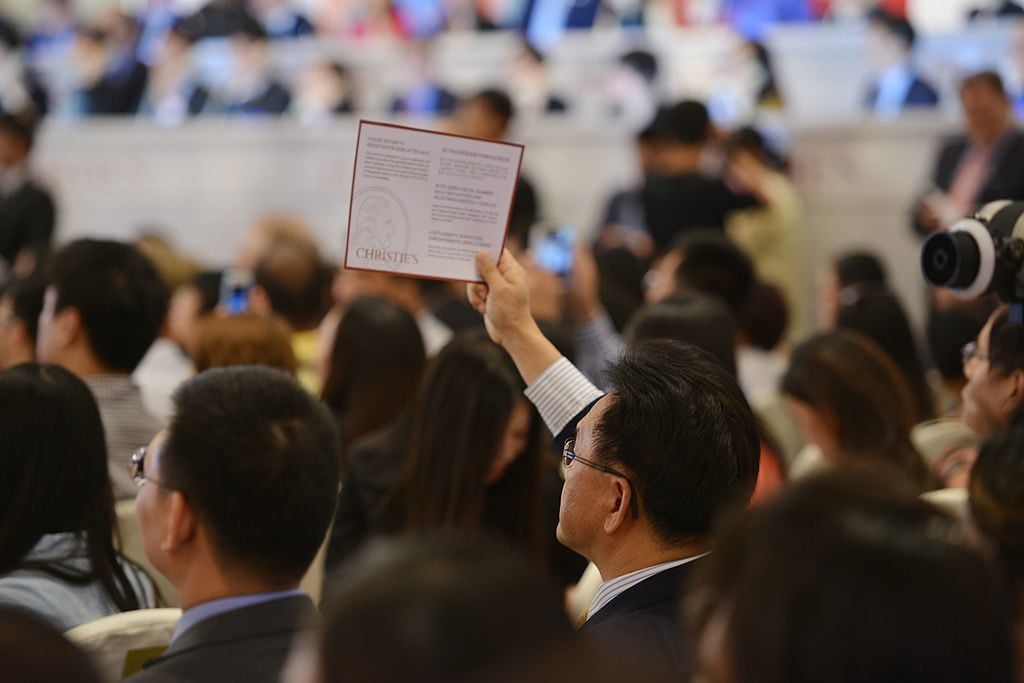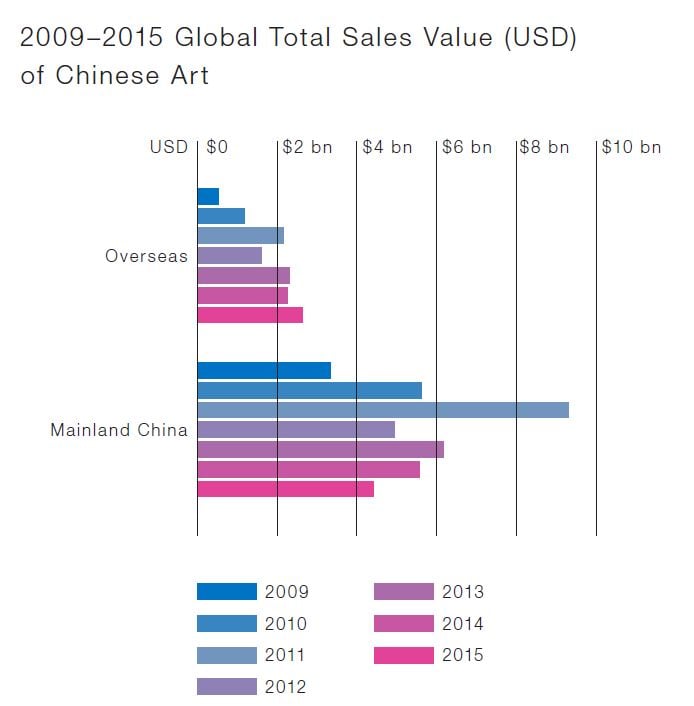Auctions
artnet and CAA Report Shows Divergent Trends in Market for Chinese Art and Collectibles
Is this a tale of two markets?

Is this a tale of two markets?

Eileen Kinsella

Continuing a trend seen in recent years, the art and antiques market within China saw another considerable drop in 2015, according to data in the fourth annual report from artnet and the China Association of Auctioneers (CAA).
However, robust prices for Chinese art and antiques at auctions held outside the country—and the surge in high-net worth individuals in the region—suggest global demand is still extremely healthy. In fact, the report suggests that supply and ongoing nonpayment issues within China could be partly to blame.
The collaborative artnet/CAA report is the only detailed analysis available on auctions in mainland China, particularly since it features data that has been vetted by the CAA.
“The results show two very diverging trends in the market for Chinese works of art,” said Dr. Clare McAndrew, head of Arts Economics. “The market in mainland China witnessed one of its worst declines since 2012, and after two years of contraction it was left at less than half the value it achieved at the height of the boom in 2011. In contrast the market outside the Mainland was one of the strongest performers in the entire global market,” she writes, adding that it increased by 14 percent.
She pointed to the 14 percent value increase in the external Chinese antiques and artworks, as “even more remarkable when set against the context of a global market decline of seven percent and a drop in international sectors such as postwar and contemporary art.”

Source: artnet.
According to the report, total sales value in mainland China continued to decline in 2015, falling 19 percent, to $4.4 billion, compared to the 2011 peak of $9.3 billion. The global total sales value for Chinese art declined by nine percent year on year, to $7.1 billion. Despite that drop, the market still represents 32 percent of global total art auction sales.
Despite some improvements, nonpayment rates in mainland China remained high, at a rate of 41 percent, compared with 45 percent in 2014.
It appears some top auction houses consolidated power amid the volatility; as the market contracted in China, the market share held by the top five auction houses continued to increase over the past three years, from 47 percent in 2013 to 55 percent in 2015. Beijing Poly International Auction garnered the largest market share, followed by China Guardian.
On a positive note, the overseas market for Chinese art reached a historic high of $2.6 billion, reaching a size more than half that of mainland China for the first time. The average sale price increased eight percent to $54,265, the highest level in four years, and three times higher than the average in mainland China ($17,697).
North America saw a 70 percent increase in the supply of Chinese art in 2015, with a healthy sell-through rate of 61 percent. It is the largest market for Chinese art overseas, in terms of volume.
Despite the slowdown in the mainland, there were still plenty of individual trophy lots at auction, including the highest selling painting of the year, Eagle, Rock, and Flora by Pan Tianshou, which sold for $43 million at China Guardian’s spring auction.

Pan Tianshou, Eagle, Rock, and Flora sold for $43 million at China Guardian. Courtesy of China Guardian.
The second highest selling lot was Thousands of Mountains in Autumn by Li Keran, which sold for $28.4 million, also at China Guardian, at their autumn sale in 2015.

Li Keran Thousands of Mountains in Autumn sold for $28 million at China Guardian in fall 2015. Courtesy of China Guardian.
Among other findings from the report: an interesting shift in price structure was made visible in mainland China in 2015, where the middle to lower end of the market (roughly $75,000 to $150,000) experienced a 45 percent decrease in volume, while the ultra-high end of the market ($7.5 million and up) increased more than 200 percent.
And for the first time, there were more lots above $1.5 million sold overseas (263), than in mainland China (243).
“The Asia Pacific region is hugely important for the art market, and now it’s the biggest center of high net worth wealth in the world,” notes McAndrew.